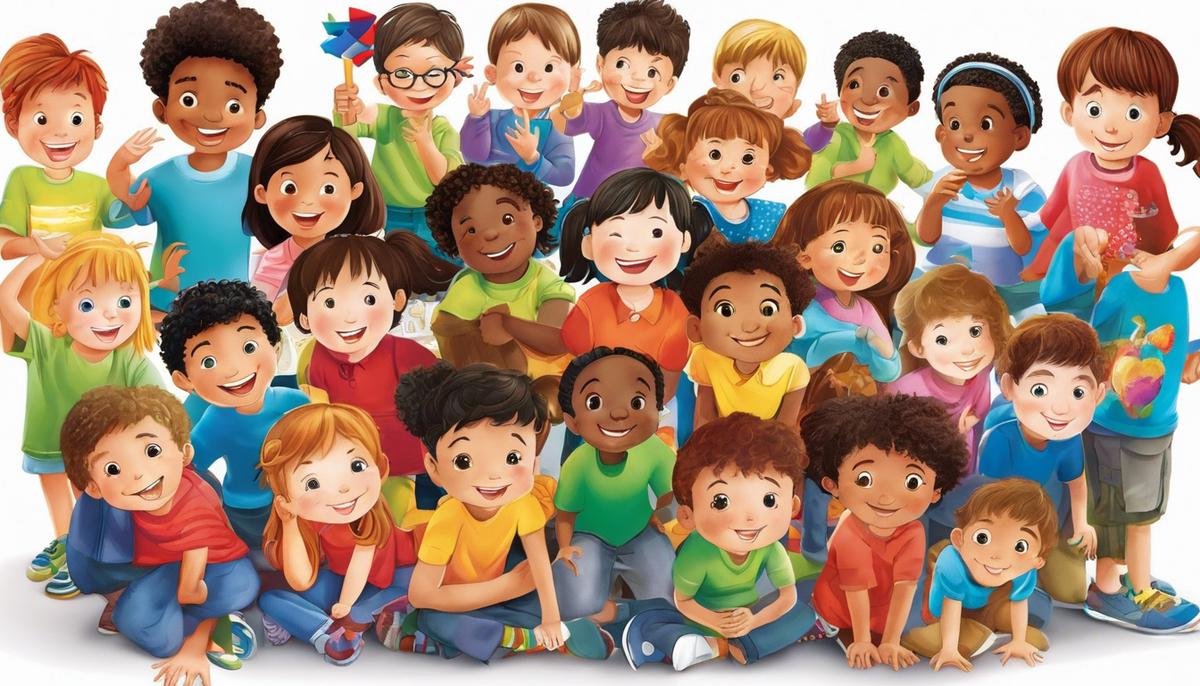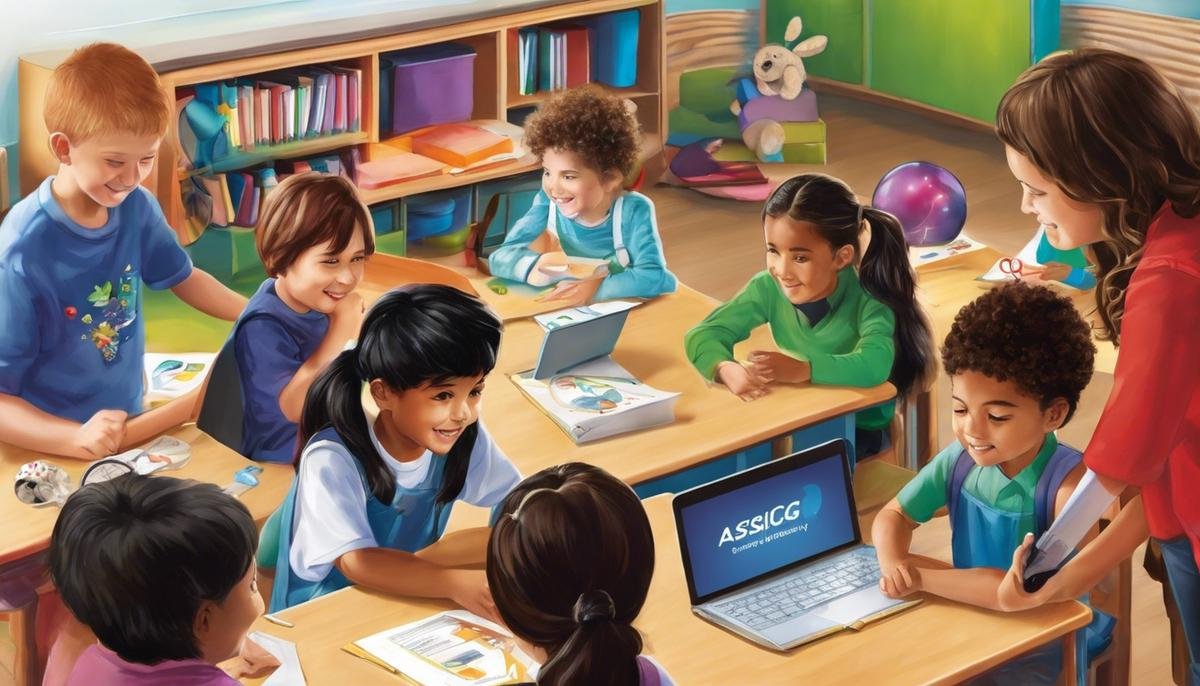
As our understanding of Autism Spectrum Disorder (ASD) continues to evolve, so too does our approach to educating children within this spectrum. The journey of discovery stretches from understanding the nature and nuances of autism, analyzing the junction between education and autism, appreciating the role of assistive technology, embracing the rise of inclusive education, to preparing for the transition into adulthood. This exploration aims to shed light on the spectrum of autism and the educational trends of 2023 that are shaping the lives of children and young adults with autism, as well as those who play crucial roles in their growth and development.
Understanding Autism
Understanding Autism and Recognizing its Signs in Children
Understanding what makes each child unique is fundamental in nurturing a loving and healthy family environment. Diversities such as cultural backgrounds, personality traits, and individual capabilities come into play, and in some instances, even specific medical conditions like autism. The very mention of “autism” can send a wave of worry across a parent’s heart. However, arming oneself with knowledge about this condition can dispel fears, prepare the family, and most importantly, ensure appropriate support for a child with Autism Spectrum Disorder (ASD).
It’s often said that if you’ve met one person with autism, you’ve met one person with autism. This phrase encapsulates how autism can vary significantly from one individual to another. Autistic people may share some common characteristics, however, how these traits manifest or affect them can greatly differ in each case.
Autism Spectrum Disorder (ASD) is a complex neurodevelopmental disorder that impacts a child’s social interactions, non-verbal communication, and exhibits a pattern of repetitive behaviors. It implies a ‘spectrum condition’ that affects individuals differently and to varying degrees.
Now, the burning question is, how do you identify signs of autism in your child? It’s worth noting that autism isn’t typically diagnosed until around age 2 or 3, and sometimes even later. However, some telltale signs could emerge in infancy.
Babies and toddlers are naturally curious; they watch adults, make eye contact, and love to engage in interactive games. However, a baby who diligently avoids eye contact or seems uninterested in interactive games could be showing early signs of autism.
By their first birthday, giggles, cooing, and babbling should dominate a child’s sound repertoire. They string syllables together and start to imitate sounds, so a delay in speech or absence of these standard markers could be an early indication of ASD. It’s necessary to tread softly here, as some kids are just late talkers. If unsure, always consult a pediatrician.
Repetitive actions can be another sign. This can include hand flapping, rocking back and forth, spinning in circles, or insisting on keeping their things in a precise order.
In terms of play, children with autism often prefer to play alone. They may not show an interest in make-believe games or engage in role-play, distinguishing features of typical childhood play.
Remember, every child is different, with unique milestones and development timelines. Observing any of these signals doesn’t necessarily mean a child has autism. However, if multiple signs are observed or if there’s a concern about a child’s development, it is crucial to immediately seek advice from healthcare professionals.
Ultimately, an autism diagnosis is not the end of the world, as children with autism have unique strengths that can be nurtured and developed. It can signal the beginning of a journey filled with love, discovery, and understanding. Through creativity, patience, and a dash of parental instinct, you can create a supportive, engaging, and loving environment for your child.
Remember, in every child lies an ocean of potential, and it’s our responsibility and privilege as parents to help them navigate it confidently. Together, let’s celebrate diversity, show compassion and promote an understanding environment where each child can thrive.

Educational Approaches for Children with Autism
Title: Leading Educational Frameworks and Approaches for Children with Autism
In the realm of education, a one-size-fits-all approach is not always effective. This is especially true when dealing with children on the autism spectrum, who may flourish better under specially tailored educational frameworks and approaches. In our journey of understanding autism, it becomes vital to explore various education methodologies used to support our precious children’s learning experience.
One of the well-established educational frameworks for children with autism is Applied Behavior Analysis (ABA). ABA is an evidence-based approach often recommended by professionals for its effectiveness in enhancing communication, social interactions, and other essential skills. This technique encourages positive behaviors through reinforcement, helping children on the autism spectrum to navigate the world around them in a more productive and comfortable way.
An alternative to ABA is the Treatment and Education of Autistic and Communication related handicapped CHildren (TEACCH) method. This program adheres to a more structured approach in teaching, using visual cues and a predictable routine to create a calm and organized environment for learning. Its individual-centric ethos respects the unique challenges and strengths of each child, making it a beloved choice to many.
Moreover, the Developmental, Individual differences, Relationship-based model (DIR/Floortime), is another resourceful tool. It emphasizes emotional interactions and nurturing relationships. By focusing on the child’s unique needs and capabilities, this interactive approach encourages the child to reach their developmental milestones at their pace, without imposing stress or unwanted pressure.
Another framework gaining momentum is Social Stories, created by Carol Gray. This method uses short and engaging narratives, usually accompanied by illustrations, to help children with autism better understand social and personal situations. Based on a principle of learning through storytelling, Social Stories can be easily customized to fit each child’s unique learning style, making every lesson a joyful adventure.
Finally, Pivotal Response Training (PRT) can significantly help children with autism. A part of the naturalistic teaching strategies, PRT focuses on key areas such as motivation, self-initiations, and generalization to boost a child’s social and communication skills. Often incorporated into play activities, PRT makes learning fun, natural and highly effective.
It’s important to note that every child on the autism spectrum is unique, and what may work for one may not work for another. Selecting the best educational approach depends on your child’s specific needs and strengths, and might require professional consultation. Yet, with the plethora of frameworks available, parents can indeed feel confident that their children with autism have vast opportunities to grow, learn, and thrive. Foster their potentials, catch them when they stumble, and boost their spirits. Always remember, in their little ways, every step forward counts for these wonderful children we call our own.

The Role of Assistive Technology in Learning
Enhancing Learning Through Assistive Technology: Empowering Children with Autism
No two children with autism are alike. This principle is especially critical when it comes to their education. After noting the presence of autism and understanding its implications, parents and educators should be focused on maximising the potential of these brilliant young minds. One of the most effective ways to do this is by integrating assistive technology into their education program.
Assistive technology, or AT for short, is a broad term that incorporates any device, piece of equipment, or system that helps bypass, work around or compensate for an individual’s specific learning deficits. They come in a range of capabilities, making it possible for every child to find the tools that best cater to their needs. From text-to-speech functions to visual organizers, these tools have been game-changers for many children with autism.
AT provides a custom-fit learning environment. Every child with autism has a unique combination of strengths and challenges, and AT allows for a tailor-made learning experience tailored to an individual’s requirements. For example, a child who struggles with handwriting might benefit from a keyboard or a speech-to-text device, while those working on social skills might find applications that simulate various social situations beneficial.
One of the primary advantages of AT is its impact on communication, a typically challenging area for many with autism spectrum disorder. Technologies such as speech-generating devices or picture exchange communication systems have revolutionised the way children with autism can express themselves. With the correct equipment, these individuals can have an active role in narrating their world and communicating their needs, feelings, and thoughts.
Furthermore, AT helps promote independence and improves academic performance. Primer tasks like time management and organization can be daunting for children with autism. By incorporating the use of technology to assist with these tasks, such as electronic reminders or visual scheduling apps, children can start navigating their obligations with minimal assistance.
As the technology becomes more intuitive and accessible, so does the inclusive environment it helps foster. AT can provide a sense of ‘normalcy’ for not only children with autism but also for their peers. Technologies that are ringing in this inclusive wave include virtual classrooms, assistive listening systems, and closed captioning. Each of these aids allows children with autism to participate in the same activities as their classmates, breaking down the social barriers they often face.
One crucial thing to note is that the implementation of AT should be a team effort. By including educators, therapists, and the child themselves in the decision-making process, you can ensure the technology aligns with the child’s personal learning goals.
Using assistive technology to boost their educational experience is only a part of the journey in empowering children with autism. Remember to leverage their unique strengths and to always cultivate a spirit of understanding, resilience, and respect every step of the way. As a parent, educator, or community member, creating an environment that celebrates their uniqueness while providing the tools they need, will make all the difference. With AT, children with autism can go beyond just learning – they can thrive.

The Rise of Inclusive Education
Inclusive education is emerging as a transformative force in modern classrooms around the world, notably shaping the academic journey for children with Autism Spectrum Disorder (ASD). As we march forward into 2023, it is heartening to see the strides our education systems are taking in embracing a learner-centric approach, especially for our children with differing abilities.
A momentous trend in this realm is the growing recognition of the potential of universal design for learning (UDL). By providing a blueprint for designing goals, assessments, materials, and teaching methods that can be customized and adjusted for individual needs, UDL helps to maintain high achievement expectations for all students. In an ASD context, this means that academic content is made more accessible, engaging, and high-functioning, void of the typical challenges that these children often face.
Inclusivity moves beyond mere participation or presence in a classroom. It signals belonging, where feedback and assessments are constructive, positive, and oriented towards the child’s specific strengths. For instance, putting into practice strength-based strategies for children on the autism spectrum can significantly enhance their engagement and motivation. This approach values their unique skills and interests, creating meaningful learning experiences that both challenge and inspire.
Another revolutionary aspect of inclusive education for children with autism is the adoption of technology in creating flexible learning pathways. Virtual Reality (VR), for example, is offering significant opportunities for experiential learning — a boon for children who struggle with abstract concepts. Through VR, children can visualize complex ideas, engage in immersive storytelling, or experience calming therapy sessions to manage meltdowns.
Equally promising is the infusion of artificial intelligence (AI) in adaptive learning systems. Such programs can track student data, identify learning gaps, and adjust instruction accordingly. The customization these platforms provide can be instrumental in scaffolding instruction at the right pace for children with autism, profoundly aligning with their unique learning paths.
To maximize these forward-thinking initiatives in 2023, collaboration among all stakeholders—teachers, parents, therapists, and the broader community—is crucial. Training educators to understand autism, adapt teaching methodologies, and employ differentiation in evaluation will lay a strong foundation for inclusion.
Moreover, parental involvement is an essential ally in this journey. Parents can provide unique insights into their children’s strengths and triggers, helping to shape adaptive strategies in the classroom. The community, too, plays a vital role in setting the right expectations, endorsing equality, and embracing neurodiversity.
Inclusive education in 2023, then, is not just about placing children with autism within the four walls of a classroom. It’s about a shift in mindset—one that recognizes the value of inclusivity and the potential of every child. It’s about reframing education from a “one-size-fits-all” to a “one-size-fits-one” approach. As we imbibe this ethos, we not only shape the learning environment for children with autism, but we also contribute to a more inclusive, empathetic, and diverse society.

Transitioning from School to Adulthood
Career and Life Skills Programs for Autistic Adolescents Transitioning into Adulthood in 2023
When teens with autism transition into adulthood, embracing the best-suited career and life skills programs can make everything smoother. In 2023, a variety of resources provide a path to independence for youth with autism, focusing on improving social interactions, enhancing job skills, and fostering community engagement. Let’s take a look at a few of them.
- Project SEARCH is an internationally recognized program originally created for individuals with developmental disabilities, and it has proven very effective for autistic adolescents. With a primary goal of securing competitive employment for participants, Project SEARCH combines classroom instruction with career exploration and hands-on training through worksite rotations.
- The Daniel Jordan Fiddle Foundation, based in the United States, provides comprehensive life and vocational skill programs specifically targeted to adults with Autism Spectrum Disorder (ASD). Their innovative model empowers individuals with ASD to engage in the breadth of adult life experiences, from career planning to hobbies, social interaction, and maintaining a home.
- Autism Speaks Transition Tool Kit offers resources specifically designed to assist families navigating the transition from adolescence to adulthood. This kit addresses topics such as community life, post-secondary education, employment, housing and residential supports, and health and safety.
- Life Skills Autism Academy offers a program that equips adolescents with functional life skills necessary for adult life. It follows the principles of Applied Behavior Analysis, with real-life practice sessions in partaking in community activities, maintaining personal hygiene, following safety rules, and other essential skills.
- The First Place Transition Academy in Phoenix, Arizona, leverages a two-year comprehensive curriculum to ensure young adults with autism and other neurodiverse conditions acquire the practical skills required for a more independent adulthood. They blend in-classroom learning with real-life practice in shared apartments, empowering participants to master skills such as cooking, budgeting, and maintaining a household.
In addition to these programs, non-profit organizations such as Autism Society offer resources relating to career development and job placement for youth with autism. The JobTIPS program is a valuable online resource offering free information, tools, and tips to help individuals with autism explore career paths, seek and obtain employment, and successfully maintain employment.
Lastly, technology continues to play an integral part in enhancing the life skills of teens with autism. Tech-based learning tools like iTransition App, by Ablelink Technologies, can help adolescents reach greater independence by teaching them vital day-to-day skills like using public transportation and managing appointments.
These are just a few examples of the numerous programs available in 2023, providing a pathway to independence for autistic adolescents transitioning into adulthood. Parents, caregivers, and educators need to think of the future with optimism, knowing that with the right support, these wonderful young adults can lead fulfilling, productive lives. It’s genuinely heartening to see so many resources available, ready to help this happen.

As we move forward in an increasingly inclusive society, the focus is on nurturing unique skills and potentials of every individual. With a focus on personalized learning, assisted by advanced technology and inclusive education practices, we are carving a path that leads to a promising future for individuals with autism. By staying abreast of educational trends and advancements for children with Autism, parents, educators, and the society at large can actively participate in their remarkable journey into adulthood. This knowledge and understanding empower us to be supportive and effective allies, and perhaps, redefine the future of education for the better.




